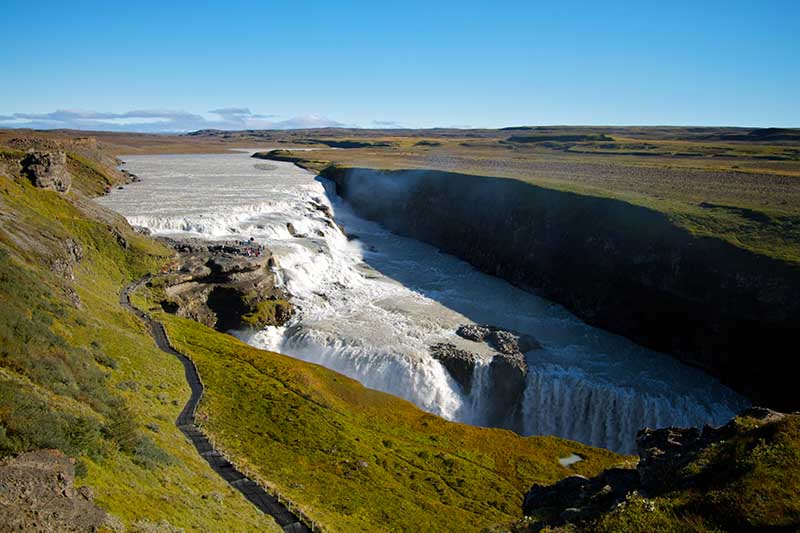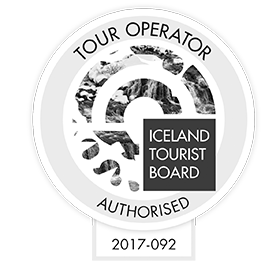- Vehicle Guide
- Passenger cars
- Estate
- Electric
- 4x4 SUVs
- Suzuki Jimny 4x4
- Dacia Duster 4x4
- Suzuki Vitara 4x4
- Suzuki Vitara auto 4x4
- Dacia Bigster 4x4
- Kia Sportage 4x4 Auto
- Kia Sportage PHEV 4x4 auto
- Mitsubishi Outlander PHEV 4x4 auto
- Toyota Rav4 4x4
- Toyota Rav4 4x4 auto
- Kia Sorento 4x4 auto
- Toyota Landcruiser 150 4x4 auto
- Toyota Landcruiser 250 4x4 auto
- Landrover Discovery 5 4x4 auto
- Landrover Defender 4x4 auto
- Prestige
- Minivans
- 4x4 Camper
- Motorhomes
- Driving in Iceland
- Our services
- Locations & Hours
- Travel Inspiration
- South Iceland: A complete guide
- Reynisfjara Beach in Iceland - Your Guide to a Safe Visit
- Best Times to Visit the Golden Circle in Iceland
- North Iceland: A Complete Guide for Drivers
- East Iceland A Complete Guide for Drivers
- West Iceland The Complete Driver’s Guide
- Your Ultimate Guide to Exploring Iceland’s Ring Road
- Driving the Diamond Circle in Iceland: Your Ultimate Guide
- Driving Iceland's Golden Circle: Your Ultimate Guide
- A 10-Day Itinerary in Iceland: Tips + Ideas
- The Perfect Itinerary for 7 Days in Iceland
- The Best Time to See the Northern Lights in Iceland with a Rental Car
- Renting a Camper in Iceland: The Complete Guide
- Getting to Iceland: A Comprehensive Guide on How to Reach the Land of Fire and Ice
- Nature Bath Locations in Iceland: A Complete Guide
- Iceland with Kids: A 5-Day Self-Drive Itinerary
- Winter Driving in Iceland: A Comprehensive Overview for Foreign Tourists
- The Total Solar Eclipse in Iceland – August 12, 2026
- Exploring Iceland's National Parks on a Self-Drive Adventure
- Exploring Iceland's Wonders: A Comprehensive Guide to Activities and Car Rentals
- Springtime in Iceland – Your Comprehensive Travel Guide
- Exploring Iceland's Most Popular Highland Routes
- The Pearls of Westfjords: The Ultimate Guide
- Exploring Iceland's Hidden Gems | Off-the-Beaten-Path Adventures
- Driving in Iceland in June: Tips for a Safe and Scenic Summer Road Trip
- Driving in Iceland in July: Tips, Routes & Rentals
- Driving in Iceland in August: Late-Summer Freedom on the Open Road
- Guide to Skaftafell Iceland Self-Drive A Journey Through Fire and Ice
- Eco-Friendly Road Trips in Iceland, Sustainable Travel Tips
- Photographer’s Paradise Top Scenic Drives in Iceland for Stunning Shots
- Iceland's Folklore and Legends A Road Trip Through Mythical Sites
- Iceland’s Midnight Sun and How to Make the Most of 24-Hour Daylight
- Exploring Iceland’s Viking Heritage: Top Historical Sites
- Chasing Waterfalls: A Road Trip to Iceland’s Most Spectacular Cascades
- Iceland's Volcanic Wonders: A Self-Drive Tour of Active and Dormant Volcanoes
- Tee Off in the Land of Fire and Ice: A Guide to Golfing in Iceland
- Birdwatching in Iceland: Puffins and Beyond
- Iceland’s Diverse Beaches: Beyond the Black Sands
- Icelandic Horses: The Unique Breed of the North
- Beyond the Ring Road: Iceland’s Hidden Scenic Drives
- Iceland’s Ice Caves: A Year-Round Adventure
- Wildlife Watching in Iceland: Where and When to Go
- Iceland’s Hidden Hot Springs: A Self-Drive Guide to Secret Soaks
- Navigating Iceland’s Weather: What to Expect Each Season
- Tröllaskagi Peninsula: Iceland’s Mountainous Marvel — A Scenic Road Trip with Höldur
- Mastering Iceland's Roundabouts: A Driver’s Guide
- Essential Tips for Renting a Car in Iceland
- Navigating Iceland’s One-Lane Bridges: Your Guide to Safe and Scenic Crossings
- Exploring Iceland’s Film Locations by Rental Car
- 5 Must-Visit Destinations Within Two Hours of Keflavík Airport
- Seasonal Car Rental Tips for Iceland’s Summer Festivals
- Understanding Iceland's F-Roads: How to Drive Safely Into the Highlands
- What Makes Iceland Unique: Top 15 Highlights for an Unforgettable Journey
- Driving and Hiking in Harmony: Explore Iceland's Natural Wonders with Höldur Car Rental
- Best Car to Rent in Iceland?
- Avoiding Common Car Rental Mistakes in Iceland
- Making Your Car Rental in Iceland Child-Friendly: Tips for Stress-Free Family Travel
- Exploring Akureyri, Iceland’s Northern Gem, with EasyJet and Europcar
- Renting a Manual or Automatic Car in Iceland
- Discover the Arctic Coast Way in Iceland with Höldur Car Rental
- How to Save on Fuel Costs During Your Iceland Road Trip
- Electric vs. 4x4 Rentals in Iceland: Which is Right for Your Trip?
- Top Scenic Detours Off Iceland's Ring Road
- Top Safety Tips for First-Time Drivers on Iceland’s Roads
- Cultural Pit Stops Along Iceland’s Ring Road
- Your Guide to Exploring Stuðlagil Canyon by Car: Iceland’s Basalt Beauty Awaits
- Day Trip Ideas From Reykjavik by Rental Car
- Visit Glymur Waterfall: The Ultimate Self-Drive Adventure from Reykjavík
- Discover the Volcanic Wonders of Lake Mývatn by Car
- Discovering the Magic of Snæfellsnes Peninsula by Car
- Your Self‑Drive Guide to Gullfoss Waterfall
- A Guide to Seljalandsfoss Waterfall in Iceland: Explore by Car
- Exploring Reykjanes Peninsula A Self Drive Guide
- Exploring Iceland Landmannalaugar by 4x4
- A Beginner's Guide to River Crossings in Iceland
- Best Car Rental Offers for Iceland’s Summer Adventures
- Your Self‑Drive Guide to Þingvellir National Park
- Your Ultimate Guide to Geysir, Iceland: All You Need to Know
- How to Pay for the Vaðlaheiðargöng Tunnel
- Your Guide to Visiting Jökulsárlón Glacier Lagoon
- The Diamond Beach in Iceland: A Sparkling Wonder Worth Visiting
- Parking fines in Iceland: how to pay and what to do if you receive one
- Where to find overnight parking in Reykjavík: a local’s guide for travellers
- How to park for free in Reykjavík: tips to save on your Iceland trip
- How to pay for parking in Reykjavík - A friendly guide for drivers in Iceland
- Game of Thrones Filming Locations in Iceland: A Self-Drive Guide
- How to Choose the Right Car Rental at Keflavík Airport
- Flying Within Iceland: Your Guide to Domestic Routes and Regional Airports
- Top 3 Must-See Attractions on Iceland's Golden Circle
- Hidden Gems Along the Golden Circle Route
- Your Essential Guide to Iceland: Currency, Culture, and Car Rental Tips
- How to Plan the Perfect Golden Circle Self-Drive Tour
- The Comprehensive Guide to Rental Car Sizes at Keflavik Airport
- Húsafell & Hallmundarhraun: Hidden Lava Field Adventures by Car
- Iceland Weather by Month: What to Expect and How to Drive Safely with Holdur Car Rental
- A Guide to Iceland’s Quirky Roadside Attractions
- Exploring Iceland’s Lava Tubes | Self-Drive Cave Adventures with Höldur Car Rental
- Coolcation in Iceland: Self-Drive Your Summer Escape to the North
- Driving Iceland’s Coastal Roads: A Guide to Lesser-Known Peninsulas
- Top Tips for Driving in Iceland Safely Year-Round
- The Best Rest Stops and Viewpoints Along Iceland's Ring Road
- Driving in Iceland in September: Embrace the Autumn Adventure
- Your Guide to Exploring Fjaðrárgljúfur – South Iceland’s Fairytale Canyon
- Explore Reykholt on a Self-Drive Tour in Iceland
- How to Choose the Right Insurance for Your Iceland Car Rental
- Hiking Múlagljúfur Canyon: Iceland’s Hidden Gem You Can’t Miss
- Understanding Iceland's Weather and How It Affects Driving Conditions
- Dyrhólaey: A Complete Self-Drive Guide to Iceland's Breathtaking South Coast
- Where to See Iceland’s Tectonic Plates Up Close
- Scenic Journey on Kjalvegur Road 35 Reykjavik to Akureyri
- Guide to Visiting Svartifoss with a Rental Car
- Kerið Crater Lake in Iceland: A Self-Drive Guide
- Your Complete Guide to Stokksnes, Iceland with a Rental Car
- Hengifoss Waterfall in Iceland: The Ultimate Self-Drive Guide
- Your Complete Guide to Visiting Skógafoss Waterfall with a Rental Car
- Into the Heart of Þórsmörk: Iceland’s Valley of Thunder
- Dynjandi Waterfall in Iceland: The Ultimate Self-Drive Guide
- Visiting Ásbyrgi Canyon in North Iceland by Car: A Complete Self-Drive Guide
- Driving in Iceland in October: Embrace the Autumn Transition
- Hraunfossar: Iceland’s Hidden Gem for Self-Drive Travellers
- Barnafoss Waterfall: Iceland’s Raging Cascade with a Legend
- Driving in Iceland in November: Your Complete Guide to a Spectacular Autumn Adventure
- Fishing in Iceland: All You Need to Know
- Öxarárfoss Waterfall in Iceland: A Self-Drive Guide with Höldur
- Life in Iceland: Essential Guide to Living in the Land of Fire and Ice
- People of Iceland - 12 Fun Facts About Icelanders
- Glaumbær Turf Houses: A Self-Drive Guide to Iceland’s Living History
- Húsavík: Whale Watching Capital of Iceland
- Svínafellsjökull Glacier: A Self-Drive Guide to Iceland’s Ice Giants
- Kirkjubæjarklaustur: A Historic South Coast Gem
- Vík í Mýrdal: South Iceland’s Coastal Treasure
- Namaskard: A Self-Drive Guide to Iceland’s Geothermal Wonderland
- Laufás Heritage Site: Where Iceland’s Past Lives On
- Navigating Iceland's Gravel Roads: Tips for a Safe and Smooth Drive
- Iceland's Best Stargazing Spots for Self-Drive Travellers
- Iceland's Best Picnic Spots: Scenic Stops for Self-Drive Adventures
- Top 5 Family-Friendly Hiking Trails Accessible by Rental Car
- 15 Tips for Travelling to Iceland
- How to Plan a Winter Photography Road Trip in Iceland
- Visiting Gljúfrabúi Waterfall — A Self-Drive Guide
- How to Spot Puffins in Iceland: A Self-Drive Adventure
- Your Essential Guide to Winter Tyres and Safe Driving in Iceland
- Iceland’s Most Active Volcanoes: A Self-Drive Guide
- Iceland’s Most Scenic Bridges and River Crossings: A Self-Drive Guide
- Iceland’s Most Instagrammable Spots for Self-Drive Travellers
- How Cold Is It in Iceland During Winter? A Self-Drive Guide
- Explore Dimmuborgir: A Self-Drive Guide to Iceland's Dark Castles
- The Ultimate Guide to Iceland’s Top 5 Waterfalls by Car
- Iceland’s Best Scenic Routes for Autumn Foliage: A Self-Drive Guide
- The Best Time to Visit Iceland for Self-Drive Travellers
- Self-Drive Adventures to Iceland’s Remote Lighthouses
- Selfoss Waterfall Self-Drive Guide: Explore Iceland Your Way
- All About the Icelandic Sheep
- Vestrahorn: A Self-Drive Guide to Iceland’s Stokksnes Peninsula
- Höfn, Iceland: The Lobster Town Self-Drive Guide
- Exploring Arnarstapi: A Self-Drive Guide
- A Guide to Iceland's Seasonal Foods for Your Road Trip
- Hverfjall Crater, Iceland: A Self-Drive Guide
- Self-Drive Guide to Visiting Askja
- A Self-Drive Guide to Visiting Kerlingarfjöll
- A Self-Drive Guide to Gunnuhver Geothermal Area
- Skriduklaustur, Iceland: A Self-Drive Guide to History & Culture
- Your Ultimate Guide to Visiting the Blue Lagoon in Iceland
- Borgarnes, Iceland: Top Things to Do & Self-Drive Guide
- A Guide to Glaciers in Iceland
- Car Rental Insurance in Iceland: What’s Usually Included, What’s Not & How to Choose
- Best Car Models for Iceland’s Terrain: Recommendations by Route
- Solo Traveller’s Guide to Self-Driving in Iceland
- Exploring Iceland’s Arctic Circle: What to See and Do
- How to Plan a Budget-Friendly Road Trip in Iceland
- The History of Iceland’s National Day: A Self-Drive Celebration
- Where to Spot Whales in Iceland: A Self-Drive Guide
- The Diamond Circle vs. The Golden Circle: Which Route is Right for You?
- Embracing a Greener Journey: Sustainability in Iceland
- Granni: A Self-Drive Guide to Iceland’s Neighboring Waterfall
- Háifoss: A Self-Drive Guide to Iceland’s Tallest Waterfall
- Iceland's Best Camping Spots for Road Trippers
- Gjáin: A Self-Drive Guide to Iceland’s Hidden Oasis
- Iceland's Hidden Waterfalls: Beyond the Tourist Trails
- Hjálparfoss: A Self-Drive Guide to Iceland’s Helping Falls
- Seasonal Self-Drive Itineraries in Iceland: What’s Open When?
- Kirkjufell: A Self-Drive Guide to Iceland’s Most Photographed Mountain
- Fjallabak Nature Reserve: A Self-Drive Guide to Iceland’s Rugged Highlands
- Hrafntinnusker: A Self-Drive and Hiking Guide to Iceland’s Obsidian Wilderness
- When to Visit Iceland: Northern Lights and Ice Caves vs. Hiking and Highland Adventures
- Visiting Laugarvatn Fontana Spa with a Rental Car: A Relaxing Icelandic Getaway
- Hvítserkur Rock: A Self-Drive Guide to Iceland’s Dragon of the North
- Skiing in Iceland: A Self-Drive Guide for Winter Adventurers
- Visiting the Mývatn Nature Baths by Car: A Self-Drive Guide
- Visiting Vök Baths in East Iceland: A Self-Drive Guide
- Visiting Skútustaðir Pseudo-Craters: A Self-Drive Guide
- Visiting Hljóðaklettar: A Self-Drive Guide on the Diamond Circle
- The Ultimate Guide to Exploring Reykjavik with a Rental Car
- Visiting Seljavallalaug: A Hidden Gem in South Iceland
- Guide to Sólheimajökull Glacier by Iceland Car Rental
- Eyjafjallajökull: Iceland’s Glacier Volcano
- Ísafjörður, Iceland: Your Ultimate Self-Drive Guide to the Westfjords
- What Continent is Iceland In? A Traveler's Guide
- Katla Volcano: A Guide to Iceland's Sleeping Giant
- The Magic of Icelandic Water: A Traveler's Guide
- A Guide to Exploring Akureyri by Rental Car
- A Self-Drive Guide to the Krafla Volcanic Region
- 12-Day Iceland Self-Drive: The Complete Itinerary
- Hekla Volcano: A Self-Drive Guide to Iceland's Gateway
- Visiting Deildartunguhver: A Self-Drive Guide to Europe’s Most Powerful Hot Spring
- Exploring Borgarfjörður: A Self-Drive Guide to West Iceland
- Exploring Stórurð: A Self-Drive and Hiking Guide to East Iceland
- Visiting the Forest Lagoon in North Iceland: A Self-Drive Guide
- Driving in Iceland in December: Embrace the Winter Wonderland
- Exploring Grábrók: A Self-Drive Guide to Iceland’s Volcanic Crater
- Exploring Látrabjarg: A Self-Drive Guide to Iceland’s Westernmost Point
- Iceland Car Hire Tips for UK Drivers: What You Need to Know
- 4-Day Iceland Winter Itinerary: The Best of the South
- Mount Mælifell: Iceland’s Emerald Volcano
- How Long to Drive Around Iceland? A Self-Drive Guide
- Driving in Iceland in January
- Exploring Djúpavík: A Self-Drive Guide to Iceland’s Remote Westfjords
- What to Wear in Iceland: Tips for Every Season
- Things to Do in Stykkishólmur: A Self-Drive Adventure Through Iceland’s Magical West
- The Secret Lagoon: Iceland’s Hidden Gem of Relaxation and Discovery
- The Silver Circle of Borgarfjörður: Your Ultimate Self-Drive Guide
- Snæfellsjökull: A Journey to Iceland’s Glacier of Legends
- Car Rental Iceland 4x4: Best 4WD Options for Your Trip
- What to See in Iceland: 20 Places You Don’t Want to Miss
- How to Prepare for an Iceland Road Trip
- Your Guide to Visiting Fagrifoss Waterfall by Car
- Exploring Stakkholtsgjá Canyon: A Self-Drive Adventure in Iceland
- Kolugljúfur Canyon: A Guide to Iceland's Hidden Gem
- Exploring Kvernufoss: A Hidden Gem in South Iceland
- Skógar Museum: A Journey Through Iceland's History
- 2 Days in Iceland: The Perfect Itinerary
- Exploring Berserkjahraun: A Self-Drive Guide to Iceland’s Lava Fields

Road Trip Itineraries
2 Days in Iceland: The Perfect Itinerary
25.11.2025
A short trip to Iceland offers a remarkable opportunity to experience some of the world's most dramatic landscapes. While you could spend weeks exploring this island of fire and ice, a carefully planned 2-day self-drive itinerary allows you to witness incredible natural wonders, from powerful geysers to cascading waterfalls. With the freedom of a rental car, you can travel at your own pace, creating a memorable and efficient adventure.
This guide provides a detailed plan for making the most of a 2-day trip to Iceland. We will cover essential travel tips, a day-by-day itinerary focusing on the famous Golden Circle and the stunning South Coast, and advice on how to travel safely and responsibly. Our goal is to equip you with the information needed for a seamless and unforgettable Icelandic experience.
Planning Your 2-Day Iceland Self-Drive Trip
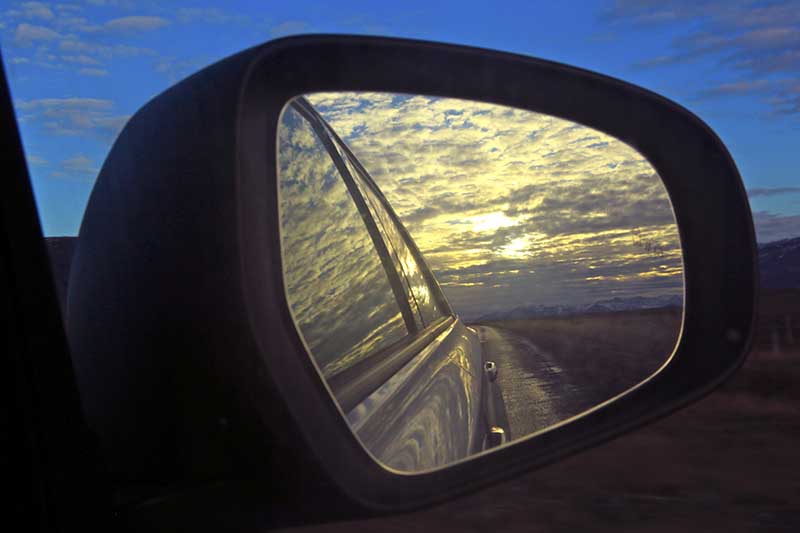
A successful short trip requires smart planning. Driving is undoubtedly the best way to see Iceland in a limited timeframe, giving you the flexibility to explore beyond organised tour schedules. Here are some essential tips to help you prepare.
Choosing the Right Vehicle
For a 2-day itinerary focused on the Golden Circle and the main Ring Road along the South Coast, a standard 2WD vehicle is generally sufficient during the summer months (May to September). The roads on this route are well-maintained and paved.
However, if you are visiting during the winter (October to April), we strongly recommend a 4x4 vehicle. Icelandic weather is unpredictable, and conditions can change rapidly. A 4x4 offers better traction, stability, and safety on roads that may have snow or ice. All our vehicles are equipped with studded winter tyres during this period as standard, in compliance with Icelandic law, to ensure your safety.
Driving in Iceland: Key Safety Tips
Driving in Iceland is a unique experience, and being prepared is crucial for a safe journey.
- Check Road Conditions: Always check the latest road and weather conditions before you set off. The Icelandic Road and Coastal Administration website (umferdin.is) provides real-time updates on road closures and conditions.
- Mind the Speed Limits: Speed limits are strictly enforced. The general limit is 90 km/h on paved rural roads, 80 km/h on gravel roads, and 50 km/h in urban areas. Fines for speeding are substantial.
- Stay on Marked Roads: Off-road driving is illegal in Iceland and causes significant damage to the delicate ecosystem. Fines are extremely high, and you can cause irreparable harm. Always stay on designated roads and tracks.
- Be Aware of the Weather: The weather can change in an instant. High winds, especially along the South Coast, can be strong enough to affect driving. In winter, be prepared for snow, ice, and reduced visibility.
- Parking: Only park in designated areas. Stopping on the side of the Ring Road to take photos is dangerous and prohibited.
See also: Understanding Iceland's Weather and How It Affects Driving Conditions.
What to Pack for a Short Trip
Packing smart is key for a comfortable trip. The Icelandic motto is "there is no such thing as bad weather, only bad clothing."
- Layers are Essential: Bring thermal base layers, a fleece or wool mid-layer, and a waterproof and windproof outer layer.
- Sturdy Footwear: Waterproof hiking boots with good grip are a must for exploring waterfalls and walking on uneven terrain.
- Accessories: Pack a warm hat, gloves, a scarf, and thick socks, even in summer. The wind can make it feel much colder.
- Swimsuit and Towel: Don't forget these for a dip in a geothermal lagoon or hot spring.
- Driving Essentials: A valid driving licence, credit card for fuel deposits, and a reusable water bottle to fill up with Iceland's pure tap water.
The Perfect 2-Day Iceland Itinerary
This itinerary is designed to maximise your time, covering some of Iceland’s most iconic sights. It begins and ends near Keflavík International Airport (KEF), making it perfect for a weekend getaway or a stopover.
Day 1: The Golden Circle & Geothermal Wonders
Your first day is dedicated to Iceland's most famous tourist route: the Golden Circle. This 300-kilometre loop includes three spectacular sights.
Morning: Arrival and Þingvellir National Park
After arriving at Keflavík Airport, pick up your rental car and head straight towards the Golden Circle. The first major stop is Þingvellir (Thingvellir) National Park, a UNESCO World Heritage site rich in history and geological significance.
Þingvellir is where the Alþingi, Iceland's parliament, was established in 930 AD, making it one of the oldest in the world. It is also one of the few places on Earth where you can see the North American and Eurasian tectonic plates separating. You can walk through the Almannagjá gorge, which marks the edge of the North American plate. For a unique experience, consider booking a snorkelling or diving tour in the Silfra fissure, where you can swim in crystal-clear glacial water between the continents. Allow at least 1.5 to 2 hours to explore the park.
Afternoon: Geysir Geothermal Area & Gullfoss Waterfall
From Þingvellir, drive about 50 minutes to the Haukadalur valley, home to the Geysir Geothermal Area. While the Great Geysir is largely dormant, its neighbour, Strokkur, erupts spectacularly every 5-10 minutes, shooting a column of hot water up to 30 metres into the air. The area is filled with bubbling mud pots, steaming vents, and the distinct smell of sulphur.
Just a 10-minute drive from Geysir is the magnificent Gullfoss (Golden Falls). This powerful, two-tiered waterfall on the Hvítá river is a breathtaking sight. Water plunges 32 metres into a deep canyon, creating a dramatic display of nature's force. There are several viewing platforms that allow you to get close to the falls and feel the mist on your face.
Evening: Kerið Crater and Overnight on the South Coast
Before concluding your Golden Circle tour, make a stop at Kerið Crater. This 3,000-year-old volcanic crater is filled with striking aquamarine water, surrounded by red volcanic rock. There is a small entrance fee, but the unique colours make it a worthwhile visit.
From Kerið, drive towards the South Coast to find your accommodation for the night. Towns like Hella or Hvolsvöllur are excellent choices, positioning you perfectly for the next day's adventures. Driving this route in the evening allows you to check in, have dinner, and rest for another day of exploration.
Day 2: Waterfalls and Black Sand Beaches of the South Coast
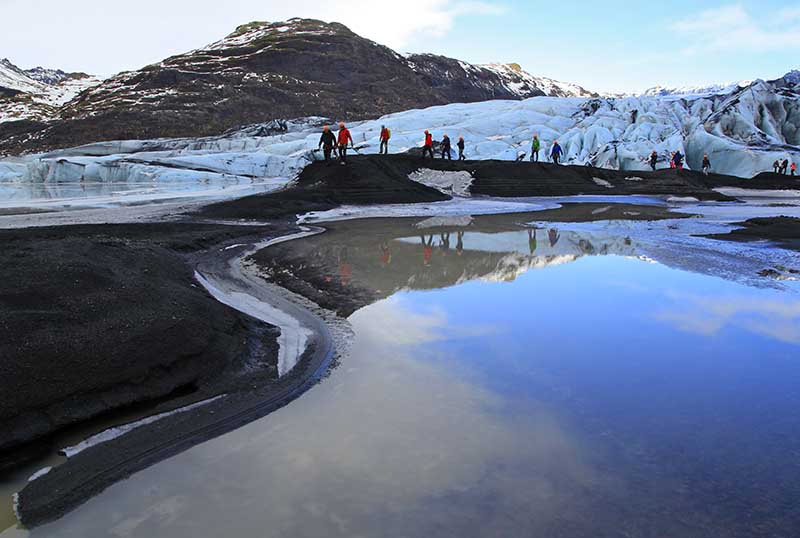
Day two focuses on the stunning landscapes of Iceland's South Coast. This stretch of the Ring Road is packed with waterfalls, glaciers, and unique coastal features.
Morning: Seljalandsfoss and Skógafoss Waterfalls
Start your day by driving to Seljalandsfoss, one of Iceland's most famous waterfalls. Its main attraction is the path that allows you to walk directly behind the cascading water. Be sure to wear your waterproof jacket and trousers, as you will get wet from the spray. A short walk from Seljalandsfoss is the hidden gem Gljúfrabúi, a waterfall concealed within a small canyon.
Next, continue east for about 25 minutes to Skógafoss. This is a classic, powerful waterfall that drops 60 metres over a cliff. You can walk right up to its base to feel its immense power. For a different perspective, climb the 527 steps up the adjacent staircase to the viewing platform at the top, which offers incredible views over the coastline.
Midday: Sólheimajökull Glacier & Dyrhólaey
For a glimpse of Iceland's glaciers, take a short detour off the Ring Road to Sólheimajökull, an outlet glacier of the larger Mýrdalsjökull ice cap. You can walk to the edge of the glacier tongue to see the ancient ice, but do not attempt to walk on the glacier without a certified guide and proper equipment.
Afterward, head towards the coast to visit Dyrhólaey, a dramatic promontory with a massive rock arch extending into the sea. In the summer (May to August), it is a popular nesting site for puffins. The views from the top, looking over the black sand beaches to the east and west, are simply stunning. Note that some parts of Dyrhólaey may be closed during the puffin nesting season to protect the birds.
Afternoon: Reynisfjara Black Sand Beach
Your final major stop is the world-renowned Reynisfjara Black Sand Beach, near the village of Vík í Myrdal. This beach is famous for its basalt columns (Reynisdrangar), which rise from the sea, and the geometric basalt formations of the Hálsanefshellir sea cave.
A word of critical caution: Reynisfjara is known for its dangerous "sneaker waves." These waves can appear suddenly and surge much further up the beach than expected. Never turn your back on the ocean, maintain a safe distance from the water's edge (at least 30-50 metres), and pay close attention to warning signs.
Evening: Return to Keflavík/Reykjavík
From Reynisfjara, the drive back to Reykjavík or Keflavík is approximately 2.5 to 3 hours. You can plan to have dinner in Reykjavík before heading to the airport for an evening flight or checking into a hotel for your departure the next day.
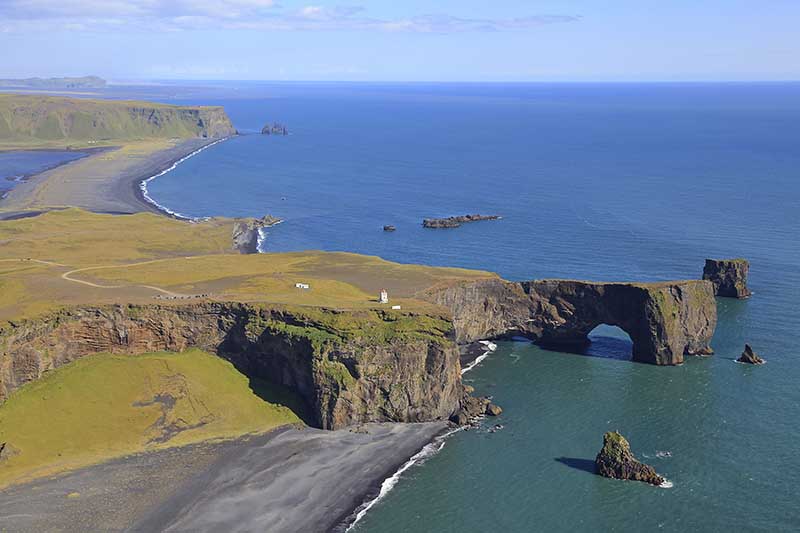
Frequently Asked Questions
Is 2 days enough to see Iceland?
Two days is enough for a fantastic introduction to Iceland. You can comfortably explore major highlights like the Golden Circle and parts of the South Coast. However, it is a short trip, so you will not have time to see the entire country or travel to more remote areas like the East Fjords or Westfjords.
Is a 4x4 necessary for a 2-day trip?
It depends on the season. From May to September, a 2WD vehicle is usually sufficient for the paved roads of the Golden Circle and South Coast. From October to April, a 4x4 is highly recommended for improved safety and handling in potential snow, ice, and windy conditions.
Can I see the Northern Lights during a 2-day trip?
The Northern Lights are visible in Iceland from late September to early April. If you visit during this period, you have a chance to see them. Success depends on clear skies and strong solar activity. To increase your chances, drive away from city lights.
How expensive is a 2-day self-drive trip?
Iceland is known for being an expensive destination. The main costs will be your car rental, fuel, accommodation, and food. You can save money by booking your vehicle and accommodation in advance, buying groceries from supermarkets like Bónus or Krónan, and filling up a reusable bottle with tap water instead of buying bottled water.
What is the best time of year for a short trip to Iceland?
Both summer and winter offer unique experiences. Summer (June-August) provides long daylight hours (the Midnight Sun), milder weather, and green landscapes. Winter (November-March) offers the chance to see the Northern Lights, explore ice caves (with a guide), and witness a snow-covered wonderland. The shoulder seasons (May, September, October) offer a balance of decent weather, fewer crowds, and lower prices.
Car Rental in Iceland: Your Trusted Partner
Höldur Car Rental is your trusted partner, offering reliable vehicles and expert support for an unforgettable journey. Our extensive network and convenient locations—including right in the Arrivals Hall at Keflavik International Airport and in Central Reykjavik—make it easy to start your trip. Drive with confidence knowing our fleet is modern, well-maintained, and environmentally friendly.
From compact cars to rugged 4x4s and spacious family vehicles, Höldur has the right rental for your needs. Choose Höldur - Europcar for a safe, dependable, and memorable Icelandic road trip.
Book your car hire in Iceland today!

